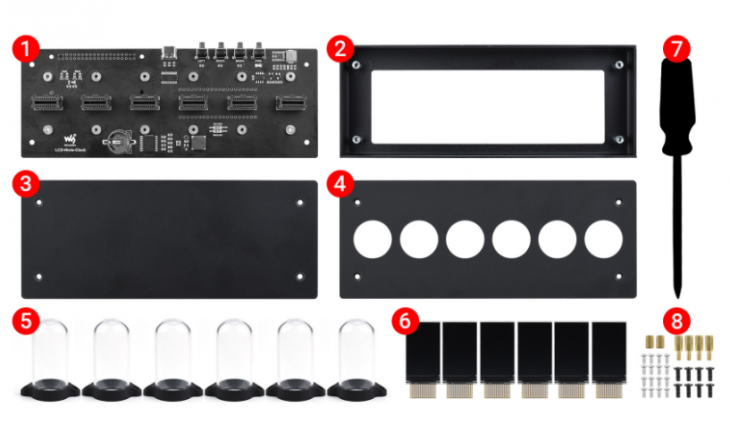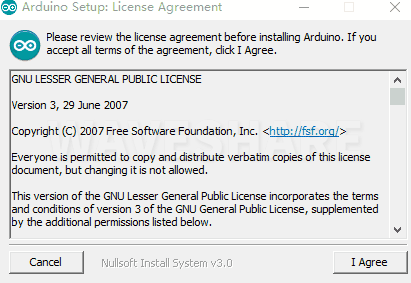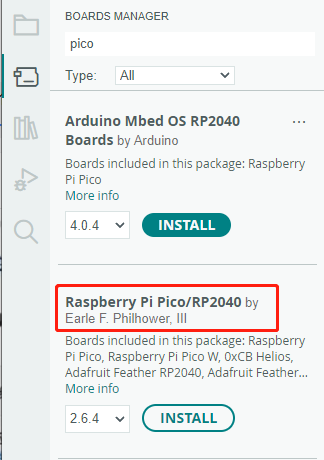LCD-Clock-A
| ||
Overview
Product Introduction
Programmable RGB pseudo nixie tube clock
Support Raspberry Pi Pico or Zero.
Do you know the old glory of the last century: the nixie tube?
Worried about the shutdown and short service life of the nixie tube?
This is an LCD pseudo nixie tube clock that can help you recall this punk style.
Specification
| Parameter Name | Parameters |
| Dimensions | 200mm × 80mm × 34mm |
| Weight | 430g |
| Power | 5V 2A |
| Interface | Type-C |
| LCD screen | 1.14", 135 × 240 pixels |
| Cover | Quartz glass |
| Support | Raspberry Pi Pico (with pinheader version) and Raspberry Pi Zero / Zero 2 W (not included) |
Onboard Resources
How To Assemble

Note: please download the code to the host control first, and test it before assembling!
- Step 1: Insert the host control (Raspberry Pi ZERO, pico, esp32-s2-pico) into the back of the "1" board. The pico and esp32-s2-picode USB ports are facing outwards without screws. Raspberry Pi needs (2x copper posts + 4 silver-white screws) to fix the 2 holes on the non-interface side;
- Step 2: On 1 to 2, you need to pay attention to 1. You must put the 4 buttons on the side before you can put them in. Then use the patterned copper column, first lightly lock the diagonal alignment holes, then lock the rest, and then all tightened (4 single-headed copper posts);
- Step 3: Install 3 on 2, use black screws, in the same way, first lightly lock the diagonal alignment holes, then lock the rest, and then tighten them all (4 black);
- Step 4: Insert the LCD into the 1 board, the side with the buttons is the back of the LCD, then put the glass cover, and lock it with silver-white screws (6*2 silver-white);
- Step 5: Cover 4 on top of 2, use black screws to lock the diagonally aligned holes first, then lock the rest, and then tighten them all (4 black).
Working With Raspberry Pi Zero
Please test the code first before assembling.
Install Library
#python2 sudo apt-get update sudo apt-get install python-pip sudo apt-get install python-pil sudo apt-get install python-numpy sudo pip install spidev sudo pip install rpi_ws281x #python3 sudo apt-get update sudo apt-get install python3-pip sudo apt-get install python3-pil sudo apt-get install python3-numpy sudo pip3 install spidev sudo pip3 install rpi_ws281x
Download & Test The Demo
Open the terminal of Raspberry Pi, run the following demo:
sudo apt-get install unzip -y sudo wget https://files.waveshare.com/upload/a/ae/LCD-Clock-A-Code.zip sudo unzip ./LCD-Clock-A-Code.zip -d ./LCD-Clock-A-Code/ cd LCD-Clock-A-Code/rpi/
Run The Program
Please keep it in the directory of the previous step. In order to display the time normally, please follow the steps below:
- For the first configuration, the default time of the program is the system time written into the RTC, so write the time for the first time. If the time is not correct, the system can be adjusted to the correct time or adjusted through the menu during runtime.
ls -l sudo python main.py
- Open main.py and comment the forty-second line of code:
sudo nano +42 main.py
Then enter # to comment, press ctrl+x and then press Y, and press Enter to comment.
Set Auto-start
sudo nano /etc/rc.local
Add the following before exit 0:
sudo python /home/pi/LCD-Clock-A-Code/rpi/main.py &
Note that you must add "&" to run in the background, otherwise the system may not be able to start.

Reboot the device:
sudo reboot
Demo
Directory
- menupic/: menu picture directory, built-in 2 sets of menu operation interface pictures with white background and black background;
- numpic/: digital picture directory, built-in 4 sets of digital pictures, used to display the time;
- main.py: main program;
- BME280.py: temperature, humidity, and pressure sensor driver;
- DS3231.py: RTC driver;
- Font.ttc: font file, used to display temperature and humidity;
- GPIOCFG.py: button, buzzer driver;
- __pycache__: The cache directory generated by Python3, is meaningless;
- ST7789V.py: drivers for 6 LCDs;
- WS2812.py: RGB lamp driver;
Customize Dial Plate
If you need to customize the dial plate, please open main.py:
sudo nano +18 main.py
This is the directory of digital picture files. You can change the letters after /numpic/ to four types: A, B, C, D. If you have any custom ones, please create a new directory E or other under /numpic/, code This is also changed to relevant;
Similarly, the custom menu is the same, change the code line 19.

Resource
Document
ESP32
Program
Software
Development Software
Pico Quick Start
Download Firmware
- MicroPython Firmware Download
- C_Blink Firmware Download
Video Tutorial
- Pico Tutorial I - Basic Introduction
- Pico Tutorial II - GPIO
- Pico Tutorial III - PWM
- Pico Tutorial IV - ADC
- Pico Tutorial V - UART
- Pico Tutorial VI - To be continued...
MicroPython Series
- 【MicroPython】 machine.Pin Function
- 【MicroPython】 machine.PWM Function
- 【MicroPython】 machine.ADC Function
- 【MicroPython】 machine.UART Function
- 【MicroPython】 machine.I2C Function
- 【MicroPython】 machine.SPI Function
- 【MicroPython】 rp2.StateMachine
C/C++ Series
Arduino IDE Series
Install Arduino IDE
-
Download the Arduino IDE installation package from Arduino website.

-
Just click on "JUST DOWNLOAD".

-
Click to install after downloading.

-
Note: You will be prompted to install the driver during the installation process, we can click Install.
Install Arduino-Pico Core on Arduino IDE
-
Open Arduino IDE, click the File on the left corner and choose "Preferences".

-
Add the following link in the additional development board manager URL, then click OK.
https://github.com/earlephilhower/arduino-pico/releases/download/global/package_rp2040_index.json

Note: If you already have the ESP8266 board URL, you can separate the URLs with commas like this:https://dl.espressif.com/dl/package_esp32_index.json,https://github.com/earlephilhower/arduino-pico/releases/download/global/package_rp2040_index.json
-
Click on Tools -> Dev Board -> Dev Board Manager -> Search for pico, it shows installed since my computer has already installed it.


Upload Demo At the First Time
-
Press and hold the BOOTSET button on the Pico board, connect the Pico to the USB port of the computer via the Micro USB cable, and release the button when the computer recognizes a removable hard drive (RPI-RP2).

- Download the demo, open arduino\PWM\D1-LED path under the D1-LED.ino.
-
Click Tools -> Port, remember the existing COM, do not need to click this COM (different computers show different COM, remember the existing COM on your computer).

-
Connect the driver board to the computer with a USB cable, then click Tools -> Ports, select uf2 Board for the first connection, and after the upload is complete, connecting again will result in an additional COM port.

-
Click Tool -> Dev Board -> Raspberry Pi Pico/RP2040 -> Raspberry Pi Pico.

-
After setting, click the right arrow to upload.

- If you encounter problems during the period, you need to reinstall or replace the Arduino IDE version, uninstall the Arduino IDE needs to be uninstalled cleanly, after uninstalling the software you need to manually delete all the contents of the folder C:\Users\[name]\AppData\Local\Arduino15 (you need to show the hidden files in order to see it) and then reinstall.
Open Source Demo
- MicroPython Demo (GitHub)
- MicroPython Firmware/Blink Demo (C)
- Official Raspberry Pi C/C++ Demo
- Official Raspberry Pi MicroPython Demo
- Arduino Official C/C++ Demo
FAQ
You need to enable I2C and SPI communication on your Raspberry Pi board.
Enable I2C:
Configure your Pi and enable the I2C:
sudo raspi-config
Select Advanced Options -> I2C -> <YES> to enable the I2C driver by kernel. Then you can check if the I2C is enabled.
Enable SPI:
Configure your Pi and enable the SPI
sudo raspi-config
Select Advanced Options -> SPI -> <YES> to enable the SPI driver by kernel. Then you can check if the SPI is enabled.
https://www.raspberrypi.com/documentation/computers/configuration.html
{{{5}}}
3V CR1220 cell battery.
{{{5}}}
Support
Technical Support
If you need technical support or have any feedback/review, please click the Submit Now button to submit a ticket, Our support team will check and reply to you within 1 to 2 working days. Please be patient as we make every effort to help you to resolve the issue.
Working Time: 9 AM - 6 AM GMT+8 (Monday to Friday)






